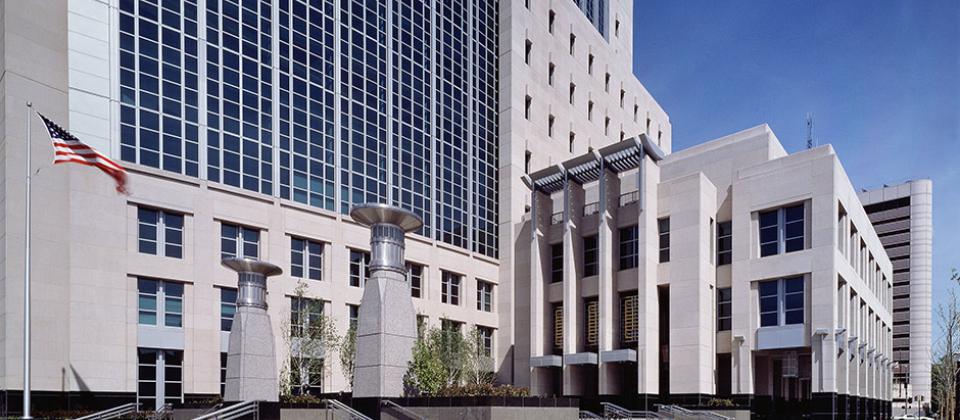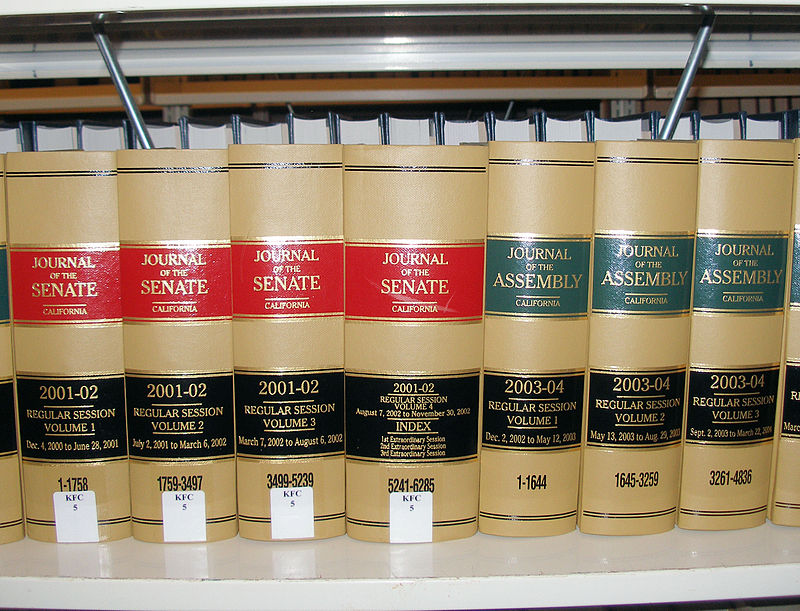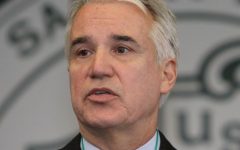
Robert Matsui Federal Courthouse for the Eastern District of California (Photo: CAEP.uscourts.gov)
District Court Judge Strikes Down 30-Foot Vaccination Protest ‘Buffer Zone’ Law
Parts of SB 742 willcontinue to be on the books to protect people going in for vaccinations
By Evan Symon, November 2, 2021 2:38 am
Judge Dale Drozd of the United States District Court for the Eastern District of California ruled that the 30-foot protest buffer zone around vaccination sites that went into effect on October 8th was too restrictive, issuing a restraining order on part of the law.
Senator Richard Pan (D-Sacramento) authored SB 742, which was signed into law by Governor Gavin Newsom earlier this year. In addition to instituting a 30-foot buffer of people from “obstructing, injuring, harassing, intimidating, or interfering with” others going inside vaccination sites, SB 742 tacked on up to $1,000 fines and up to 6 months in jail and punishment for violations.
Within days of going into effect, the Right to Life of Central California anti-abortion group sued the state for being too broad in what constitutes a vaccination site. They also charge in Right to Life of Central California v. Bonta that it restricted the First Amendment’s freedom of speech, free association, and free exercise clauses, as well as the Fourteenth Amendment’s equal protection and due process clauses. As Right to Life of Central California is located next to an abortion clinic, the law would have blocked members from approaching people on public streets outside their own building and even into the parking lot around the building.
On Saturday, Judge Drozd ruled that SB 742’s language, in particular their definition of “harassing,” is too restrictive. In his ruling, he ordered that the 30-foot buffer is to be removed due to the broad use of “harassing” but kept the law in place to prevent obstruction, injuring, intimidating, or interfering with those going in.
“Those other portions of the law appear to more precisely target the harms that the Legislature sought to prevent and further the state’s interest in ensuring that Californians can freely access vaccination sites,” said Judge Drozd in his ruling. “The law’s definition of harassing is far broader than the dictionary definition of the word ‘harass’. The state attorney general’s interpretation of the law, in court filings and oral arguments, is so vague that it is conducive to different and conflicting interpretations on what conduct is even prohibited by its terms.”
“There can be no doubt that access to COVID-19 vaccines is essential to ‘stemming the spread of COVID-19,’ and that a state’s interest in ensuring its citizens can access and obtain COVID-19 vaccinations is compelling,” added Drozd. “But it is less clear whether that should apply to all vaccines. Despite these undeniable facts, the court recognizes that the COVID-19 vaccines have been a subject of controversy and protest.”
30 foot protest buffer removed
Those for the removal of the buffer celebrated the ruling during the weekend. While part of the law is still on the books, many acknowledged that the most restrictive parts of the law were now gone.
“Free speech won the day not just for our client, Right to Life, but for every other speaker in California,” said Denise Harle, Senior Counsel for the Alliance Defending Freedom, the group that sued on behalf of Right to Life of Central California, during the weekend. “The law’s exemption for labor picketing created a double standard in restricting pro-life outreach while permitting other types of speech.”
In response, Attorney General Rob Bonta’s office gave a short reply defending the original law, saying “We will continue to defend the law and work to ensure that any Californian who would like to be vaccinated is able to obtain their COVID-19 vaccine without intimidation.”
Katrina Meyer, a nurse who administers COVID-19 vaccines, said that, for anyone hoping to get a vaccine, little would change.
“If you want it you can get it, if you don’t want it you don’t have to get it,” said the nurse. “This really only applies to places that vaccinate with a large protest presence. Most don’t, especially hospitals and other places where it’s urgent. But places where people usually protest? Yeah, this will allow them to still be there.”
As of Monday it is unknown if California will appeal the District Court’s ruling.
- Oakland Closing Two Fire Stations, Reducing Services at Four More - January 6, 2025
- Newsom Postpones State Of The State Address To Attend Jimmy Carter’s Funeral In Washington - January 6, 2025
- Gov. Gavin Newsom Signs New Executive Order Going After ‘Ultra-Processed Foods’, Food Dyes - January 4, 2025




